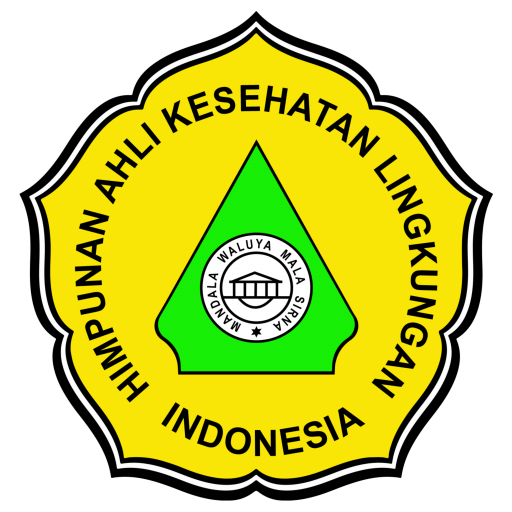A COMPARATIVE STUDY ABOUT THE AMOUNT OF MICROPLASTIC IN POLYETHYLENE TEREPHTALATE (PET) DRINKING WATER THAT WAS EXPOSED AND NOT EXPOSED BY SUN AT ENVIRONMENTAL HEALTH LABORATORY OF POLTEKKES KEMENKES SEMARANG AT THE YEAR 2020
Abstract
Keywords
Full Text:
PDFReferences
A’yun, Neily Qurrata. (2019). “Analisis Mikroplastik Menggunakan FT-IR pada Air, Sedimen dan Ikan Belanak (Mugil cephalus) di Segmen Sungai Bengawan Solo yang Melintasi Kabupaten Gresik”. Skripsi. Universitas Islam Negeri Sunan Ampel Surabaya.
Abdulmalik Ali, Mansurat Golden. (2019). "Presence And Characterization of Microplastics In Drinking (Tap/Bottled) Water and Soft Drink". Thesis dan Desertasi. UND Scholary Commons.
Bach, C., Dauchy, X., Severin, I., Munoz, J.-F., Etienne, S., & Cagnon, M.-C. (2014). Effect of Sunlight Exposure on The Release of Intentionally and / or Non-intentionally Added Substance from Polyethylene Terephthalate (PET) Bottles into Water: Chemical Analysis and In Vitro Toxicity. Elsevier: Food Chemistry, 63-71.
Campanale, C., Massarelli, C., Savino, I., Locaputo, V., & Uricchio, V. F. (2020). A Detailed Review Study on Potential Effects of Microplastics and Additives of Concern on Human Health. MDPI International Journal of Environmental Research and Public Health, 1-26.
Karuniastuti, N. (2019). Bahaya Plastik terhadap Kesehatan dan Lingkungan. Forum Teknologi, 6-14.
Lamnii, H., Moussa Nait-Abdelaziz, G. A., Gloaguen, J.-M., Maschke, U., & Mansoor, B. (2018). Effect of UV Ageing on The Fatigue Life of Bulk Polyethylene. MATEC Web of Conferences 165, 08002 (2018) (hal. 1-6). Lille: EDP Sciences.
Mason, S. A., Welch, V., & Neratko, J. (2018). Synthetic Polymer Contamination in Bottled Water. Fredonia: Fredonia State University of New York.
Massura J, e. a. (2015). Laboratory Methods for The Analysis of Microplastics in The Marine Environment. National Oceanic and Atmospheric Administration. NOAA Technical Memorandum, 47-48.
Menteri Perindustrian RI. (2011). Peraturan Menteri Perindustrian Republik Indonesia Nomor 96 Tahun 2011 tentang Persyaratan Teknis Industri Air Minum Dalam Kemasan. Jakarta: Kementerian Perindustrian Republik Indonesia.
Mintenig, S.M., et al. (2019). Low Numbers of Microplastics Detected in Drinking Water from Ground Water Sources. Science of The Global Environment, Vol. 5 halaman 648:631
OβMann BE, et al. (2018). Small-sized Microplastics and Pigmented Particels in Bottled Mineral. Water Research Vol. 16 halaman 141-307.
Pirzadeh, E., Zadhoush, A., & Haghighat, M. (2007). Hydrolitic and Thermal Degradation of PET Fibers and PET Granule: The Effects of Crystallization, Temperature and Humidity. InterScience, 1544-1549.
Ruzz, H., et.al. (2012). Microplastics in the Marine Environment: A Review of the Methods. Environmental Science & Technology, 60-75.
Samadi. (2007). Geografi 1 SMA Kelas X. Yudhistira: Jakarta.
Viktoria, A. V. (2017). Kontaminasi Mikroplastik di Perairan Tawar. Teknik Kimia, Institut Teknologi Bandung, 1-4.
VOA. (2019, Desember 2). Lingkungan Hidup. Diambil kembali dari Voaindonesia: https://www.voaindonesia.com/amp/who-mikroplastik-pada-air-minum-belum-menjadi-masalah-kesehatan-/5052342.html
Widianarko, B., & Hantoro, I. (2018). Mikroplastik dalam Seafood dari Pantai Utara Jawa. Semarang: Universitas Katholik Soegijapranata.
Widoastuti, Shandytias. 2018. " Kontaminasi Di-(2-Ethylexyl) Phthalate (DEHP) dari Botol Polietilena Tereftalat (PET) pada Air Minum SODIS di Yogyakarta Tahun 2018. Skripsi. Jurusan Kesehatan Lingkungan Politeknik Kesehatan Kementerian Kesehatan Semarang.
World Health Organization (WHO). (2019). Microplastics in Drinking Water. Switzerland.
DOI: https://doi.org/10.31983/keslingmas.v39i4.6580
Article Metrics
Refbacks
- There are currently no refbacks.

Buletin Keslingmas (p-ISSN : 0215-742X, e-ISSN : 2655-8033 ), diterbitkan oleh Jurusan Kesehatan Lingkungan Politeknik Kesehatan Kemenkes Semarang Jl Raya Baturaden Km. 12 Purwokerto, Jawa Tengah, Indonesia. Telp/Fax. 0281-681709
Email : buletinkeslingmas@poltekkes-smg.ac.id
Buletin Keslingmas is licensed under a Creative Commons Attribution 4.0 International License

.png)
.png)
.png)









